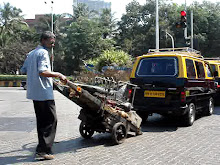
My first houseguest in Singapore arrived this summer. Stephanie, my sister, sent her kids to sleep away camp and decided to have a sleep away of her own. She soon discovered the best part about living in Singapore is leaving it, for Cambodia was just an hour's flight away!
Angkor, Cambodia was once a mysterious and far-away land. Some of the Khmer temples date back to the 9th century, but the earliest western accounts date only back to the 16th century. In the mid-1800s a French naturalist measured, surveyed and published his findings of Angkor Wat and the  other ruins. Henri Mouhot’s journals set in motion expeditions and pilgrimages to the area, which led to the tourism and conservation we see today.
other ruins. Henri Mouhot’s journals set in motion expeditions and pilgrimages to the area, which led to the tourism and conservation we see today.
 other ruins. Henri Mouhot’s journals set in motion expeditions and pilgrimages to the area, which led to the tourism and conservation we see today.
other ruins. Henri Mouhot’s journals set in motion expeditions and pilgrimages to the area, which led to the tourism and conservation we see today. Books, magazines, travel guides and online journals made it easy to learn, plan and chart itineraries to Angkor’s temples. But nothing written prepared us for the mind-blowing sight of temples overgrown with time or the feel of cool, moss-covered stone structures built in the name of kings for gods. We visited the monuments with groups of others, yet we still felt a sense of discovery – a humbling feeling of knowing we are just a passing instant in a great, big, old world. Even though Angkor is known worldwide and relatively easy to get to, the mysterious power of the land still remains.
With the tropical forests surrounding the temples, we explored with our senses and our imaginations. We began at Angkor’s water source in the Kulen Hills. Kbal Spean is a holy site honoring fertility. Water runs over the symbolic carvings in the
 riverbed and on boulders. With our machetes we hacked our way through the thick of the Cambodia jungle. Our clothes drenched with sweat. Exposed to the dangers of poisonous snakes and blood-sucking mosquitoes on a mission to find the fabled River of a Thousand Lingas…O.K., so we didn’t exactly rough it on the jungle trail with our cameras, packs, bottled water and insect repellant, but we still faced hazards. When we strayed off the beaten path, we were greeted by a sign warning us of the dangers of landmines still in the area.
riverbed and on boulders. With our machetes we hacked our way through the thick of the Cambodia jungle. Our clothes drenched with sweat. Exposed to the dangers of poisonous snakes and blood-sucking mosquitoes on a mission to find the fabled River of a Thousand Lingas…O.K., so we didn’t exactly rough it on the jungle trail with our cameras, packs, bottled water and insect repellant, but we still faced hazards. When we strayed off the beaten path, we were greeted by a sign warning us of the dangers of landmines still in the area.Our imaginations continued to flow when we visited Ta Prohm. Archeologists left the temple with the trees and
 roots growing in, on and under the ruined structure. We’ve been in the shit now for 2 days. The rain hasn’t stopped and the sponge like mud holds our boots to the ground. The jungle is a creature pulling us in to swallow us whole. We must find the temple soon or I might not live to see another sunny day…O.K., so it rained every day while we were tomb raiding, we never felt as if we were in the middle of a war-torn Vietnam battleground. When we visited Ta Prohm it was wet and steamy. The mud added to the atmosphere.
roots growing in, on and under the ruined structure. We’ve been in the shit now for 2 days. The rain hasn’t stopped and the sponge like mud holds our boots to the ground. The jungle is a creature pulling us in to swallow us whole. We must find the temple soon or I might not live to see another sunny day…O.K., so it rained every day while we were tomb raiding, we never felt as if we were in the middle of a war-torn Vietnam battleground. When we visited Ta Prohm it was wet and steamy. The mud added to the atmosphere.No matter where we visited, we always felt we were the first and only ones unearthing the architectural wonders. The people around us did not take away from the adventure. We awoke at 0-dark-30 to see the sun rise over Angkor Wat. The spectacular sight of the sun’s golden rays washing over the Khmer masterpiece is said to cure the blind. All was still except for the harmonious songs of the birds welcoming the dawn of a new day…O.K., so watching the sun rise over Angkor Wat will not cure the blind – it isn’t even a legend. Our sunrise was blocked by the clouds, but inspirational nonetheless. Dozens of people were there sharing the experience. All the languages spoken at once sounded like a song and the clicking of cameras sounded like applause.

Angkor’s centuries-old ruins are a world wonder. The temples unite all religions, races and nationalities as they “worship” the splendor of the ancient Khmer people and their art. Whether a visit is to sample a few monuments or 10 wats in 10 minutes, or if a trip is photojournalistic or historic, every traveler will pay for it the same way. Angkor may be the land of gods and rulers, but US cash is king! From entry and exit visas to tuk-tuk rides and bottles of water, the almighty dollar reigns supreme. Cambodia accepts all tourists, but they don’t take American Express.
Thanks for the pictures, Steph!

























No comments:
Post a Comment